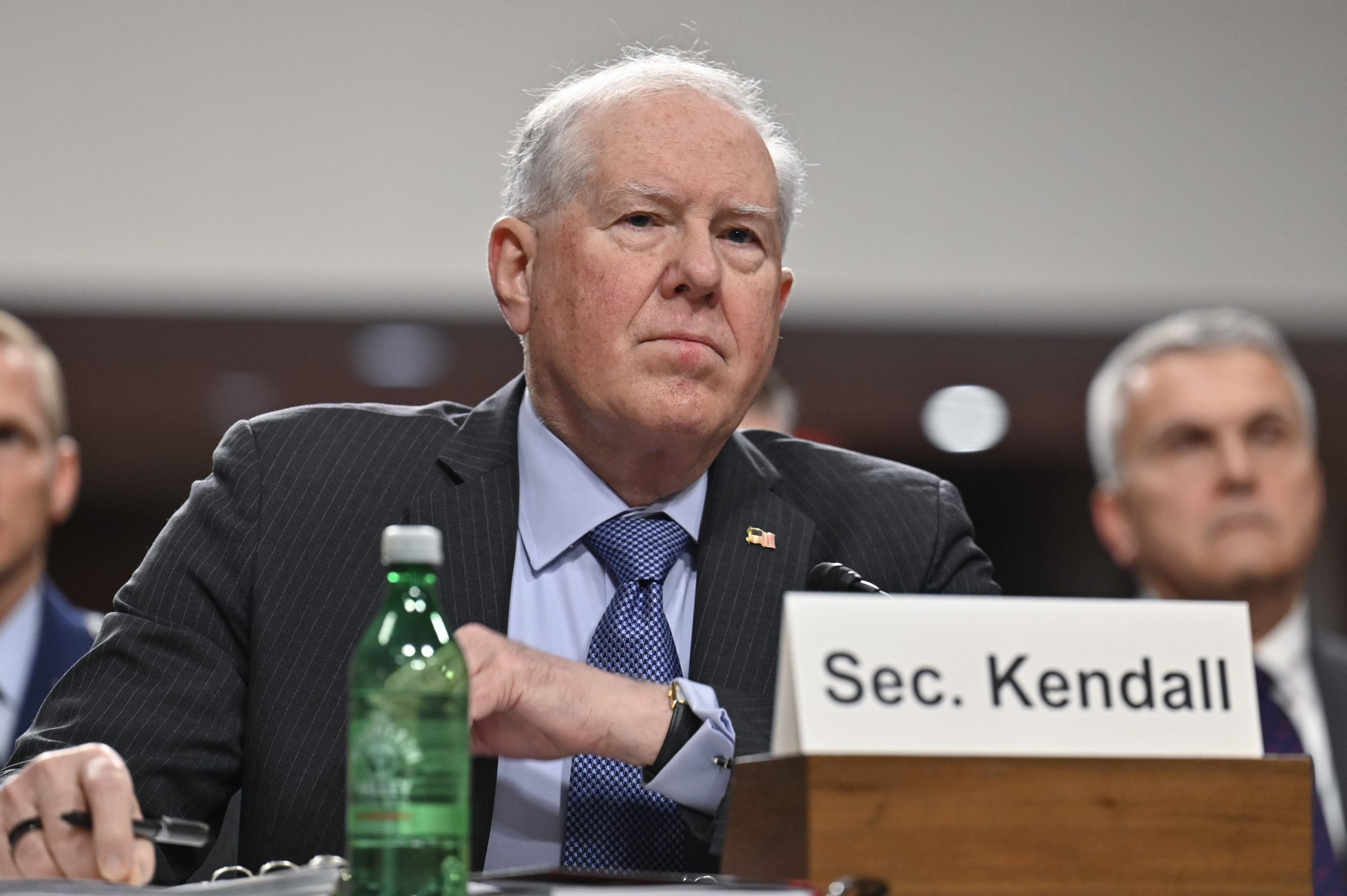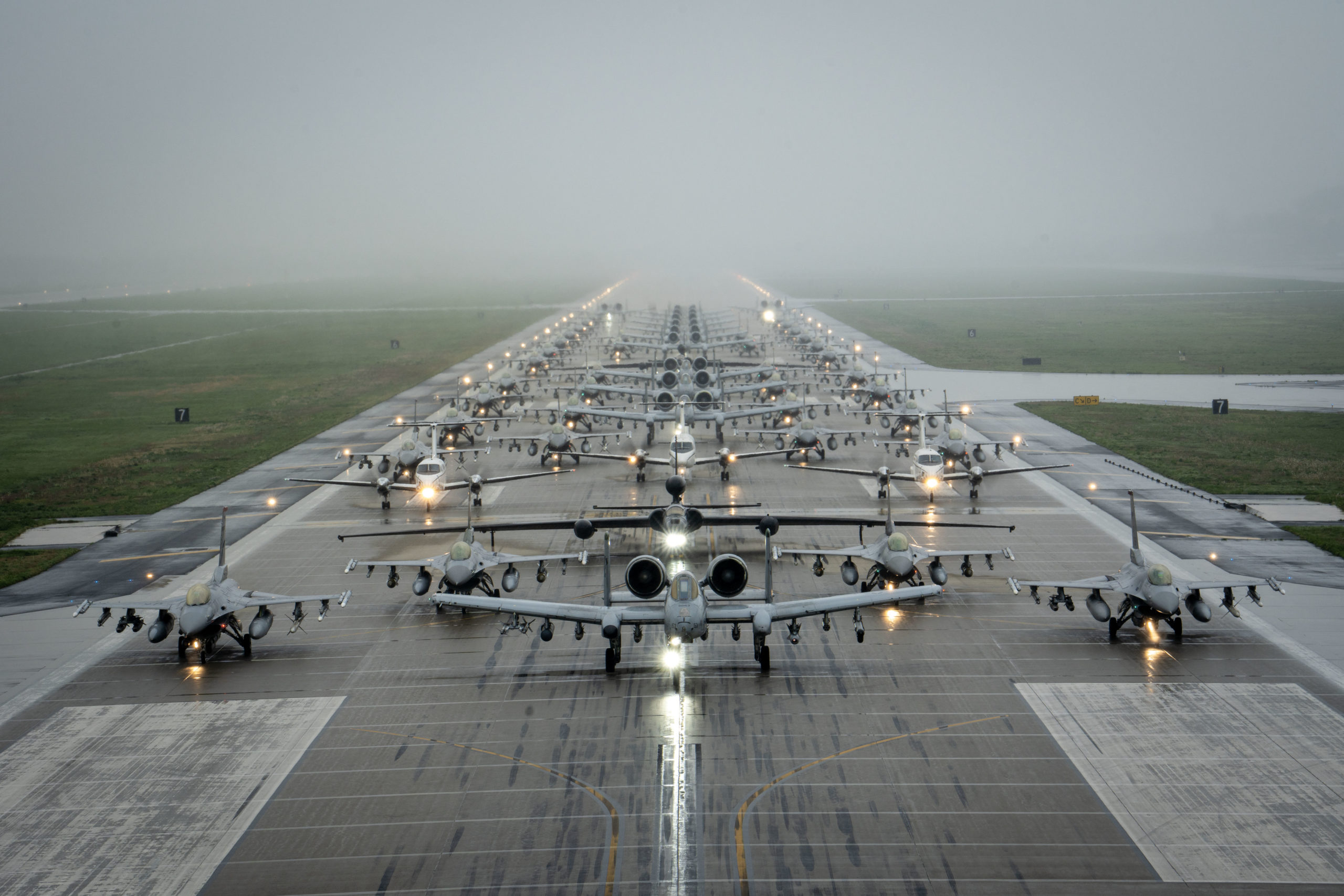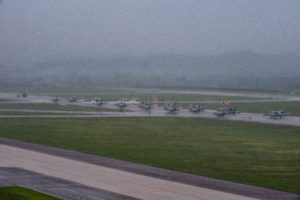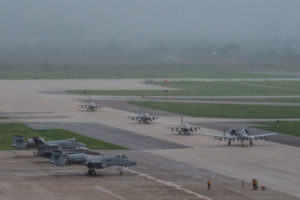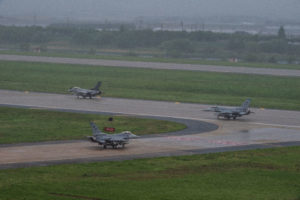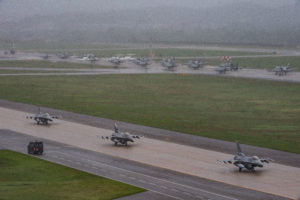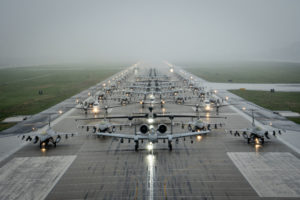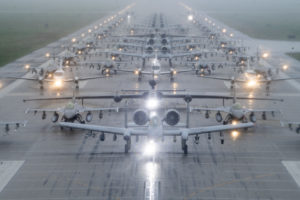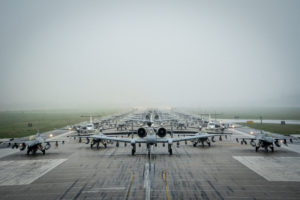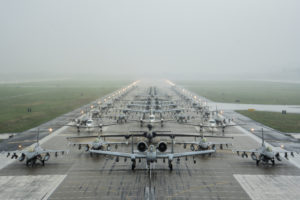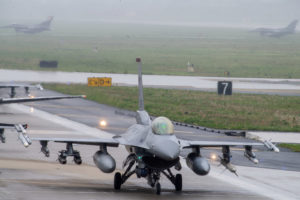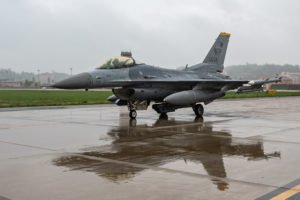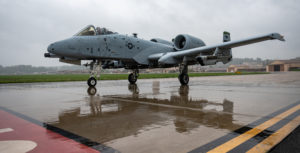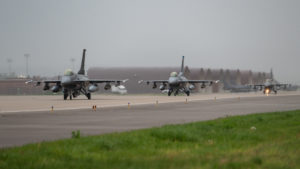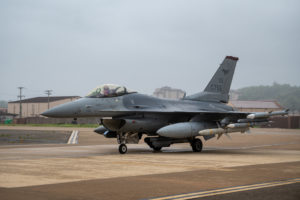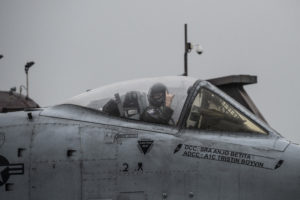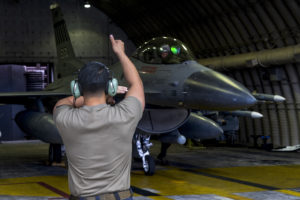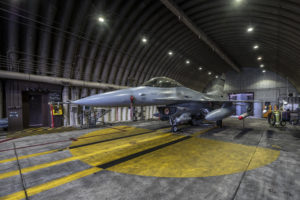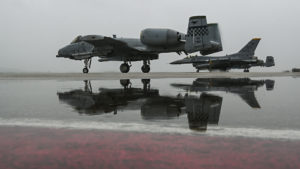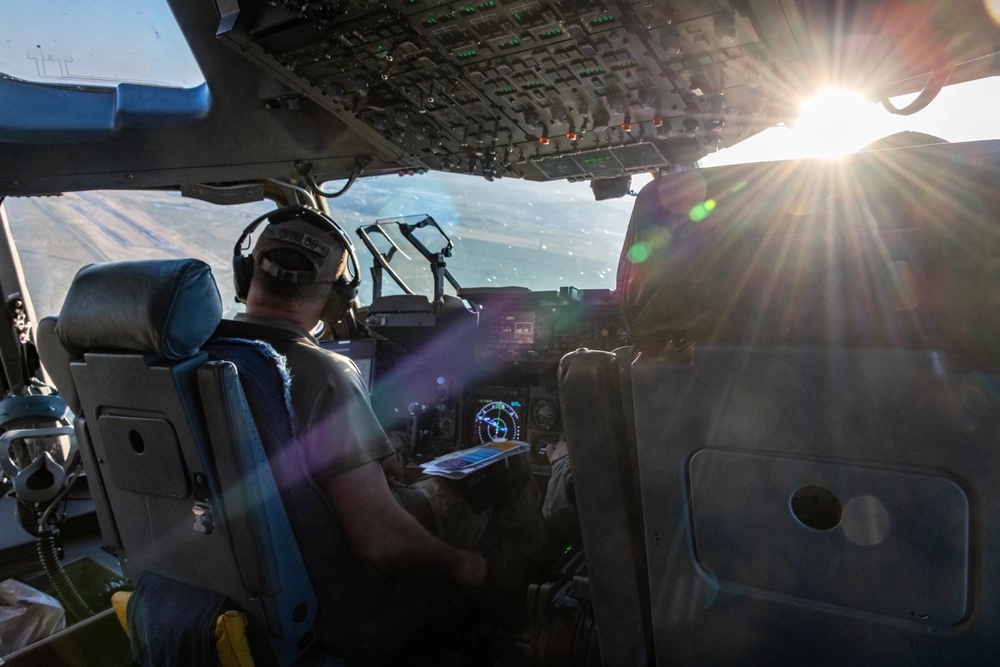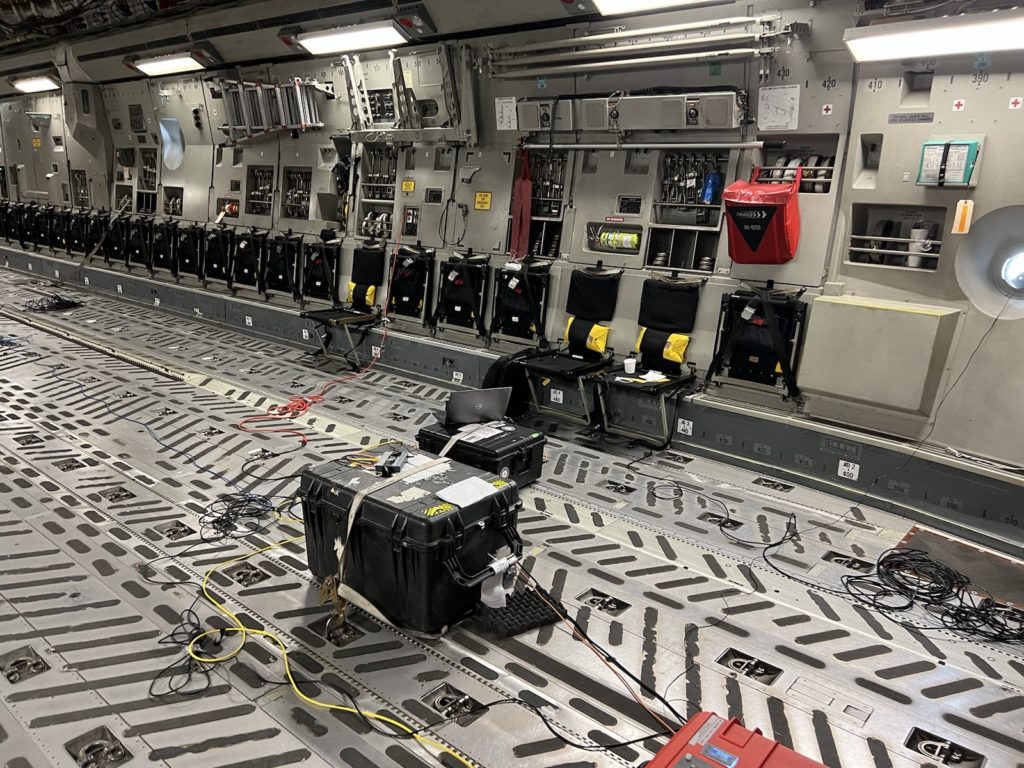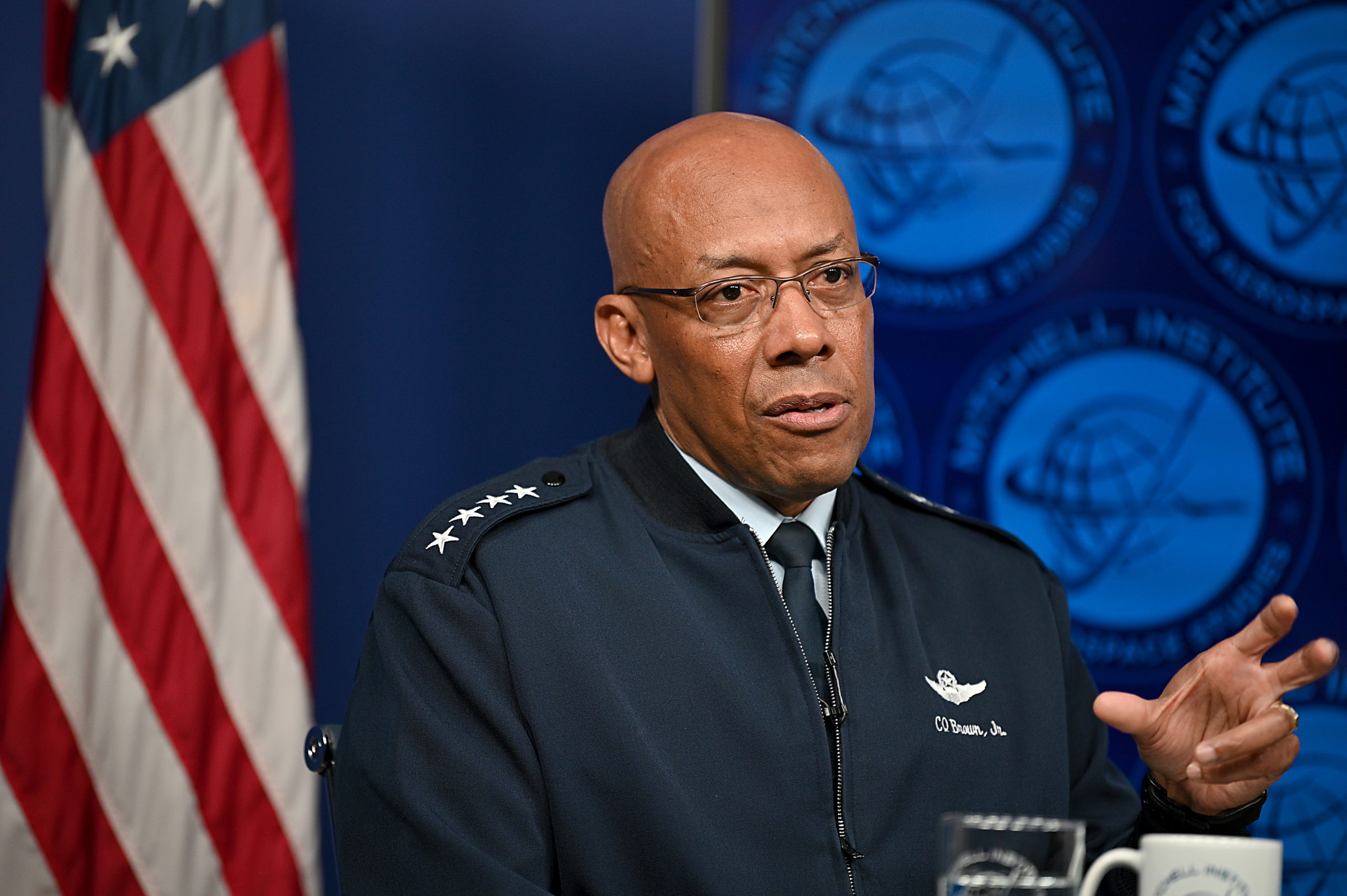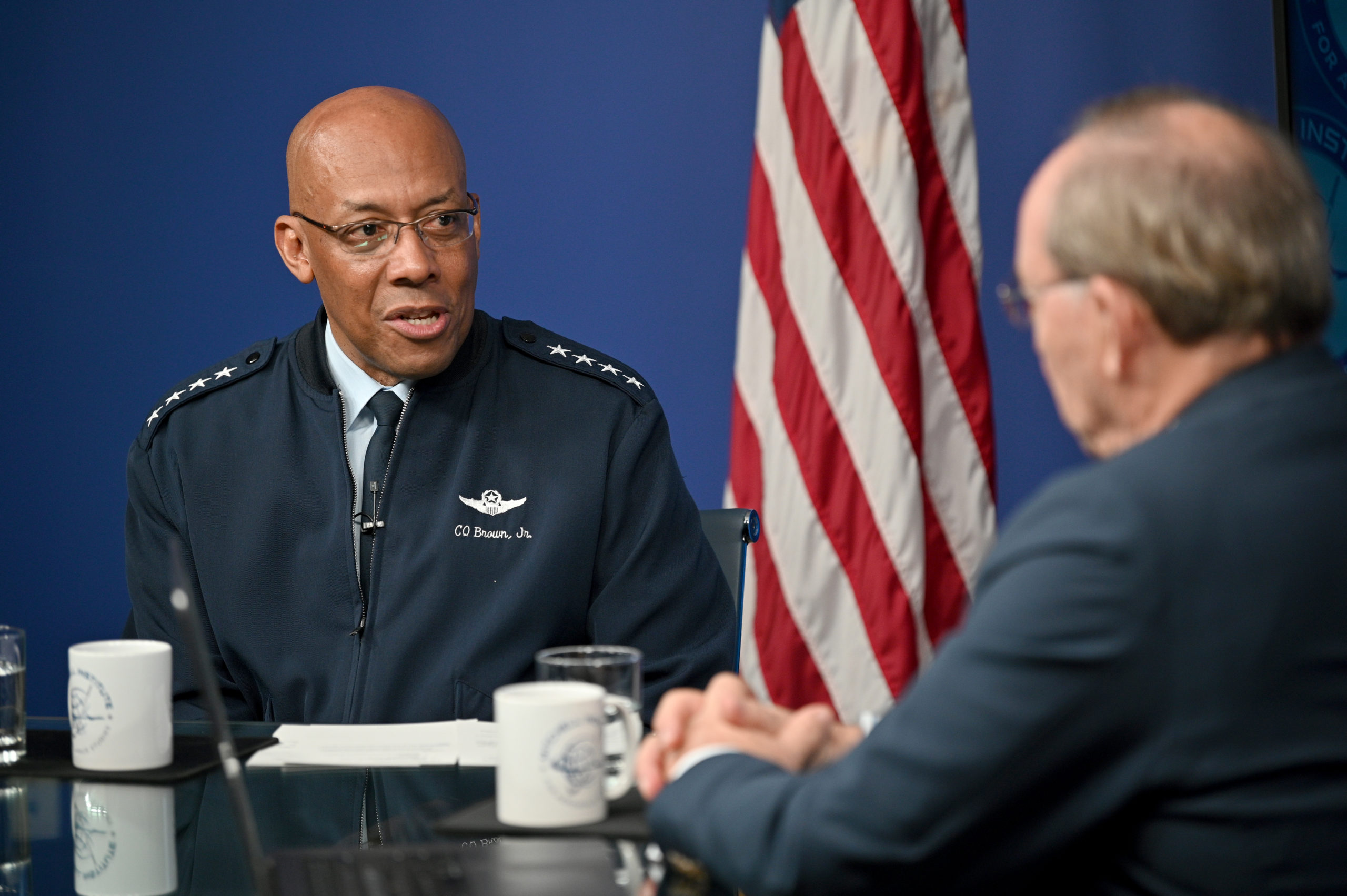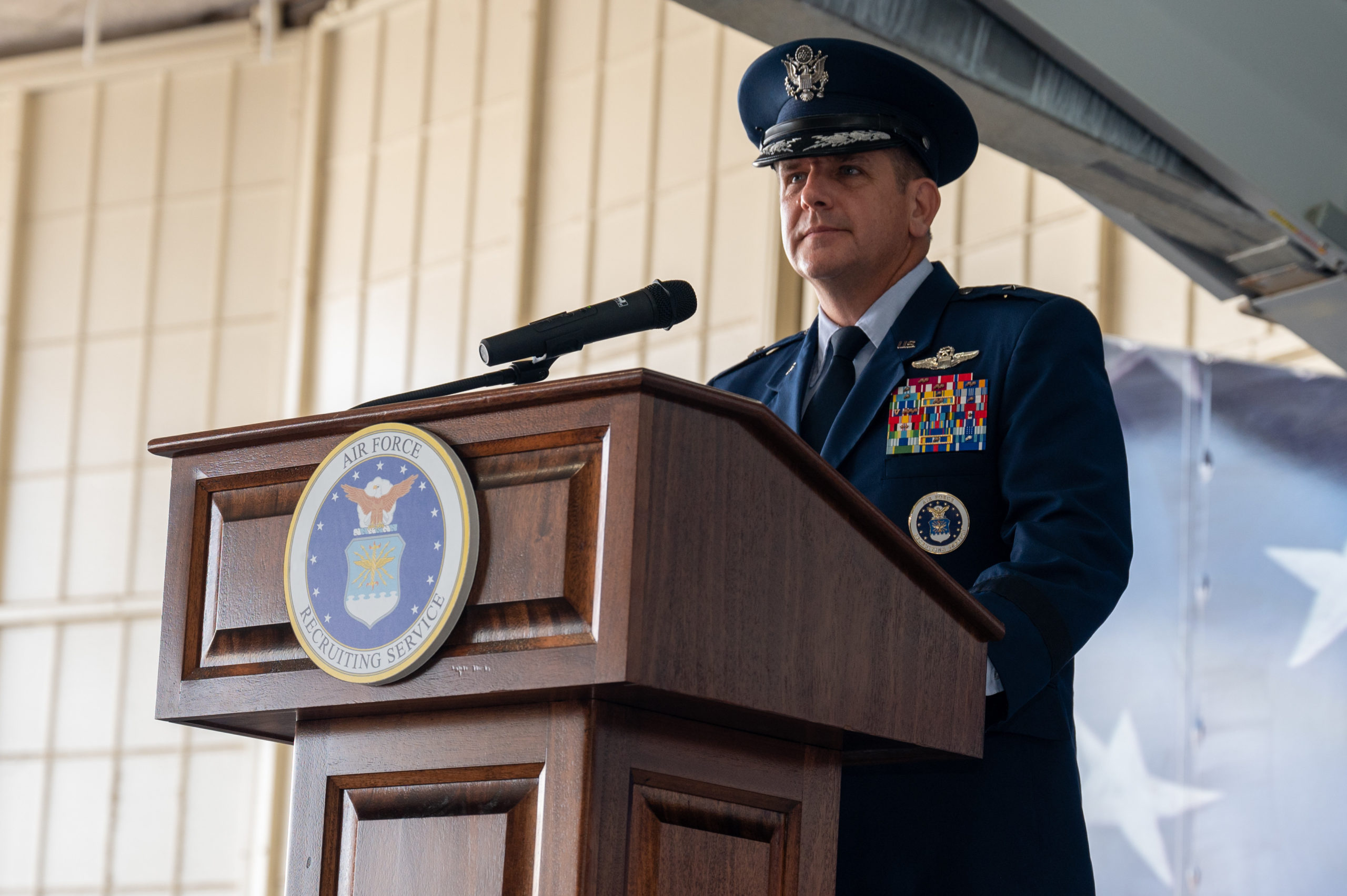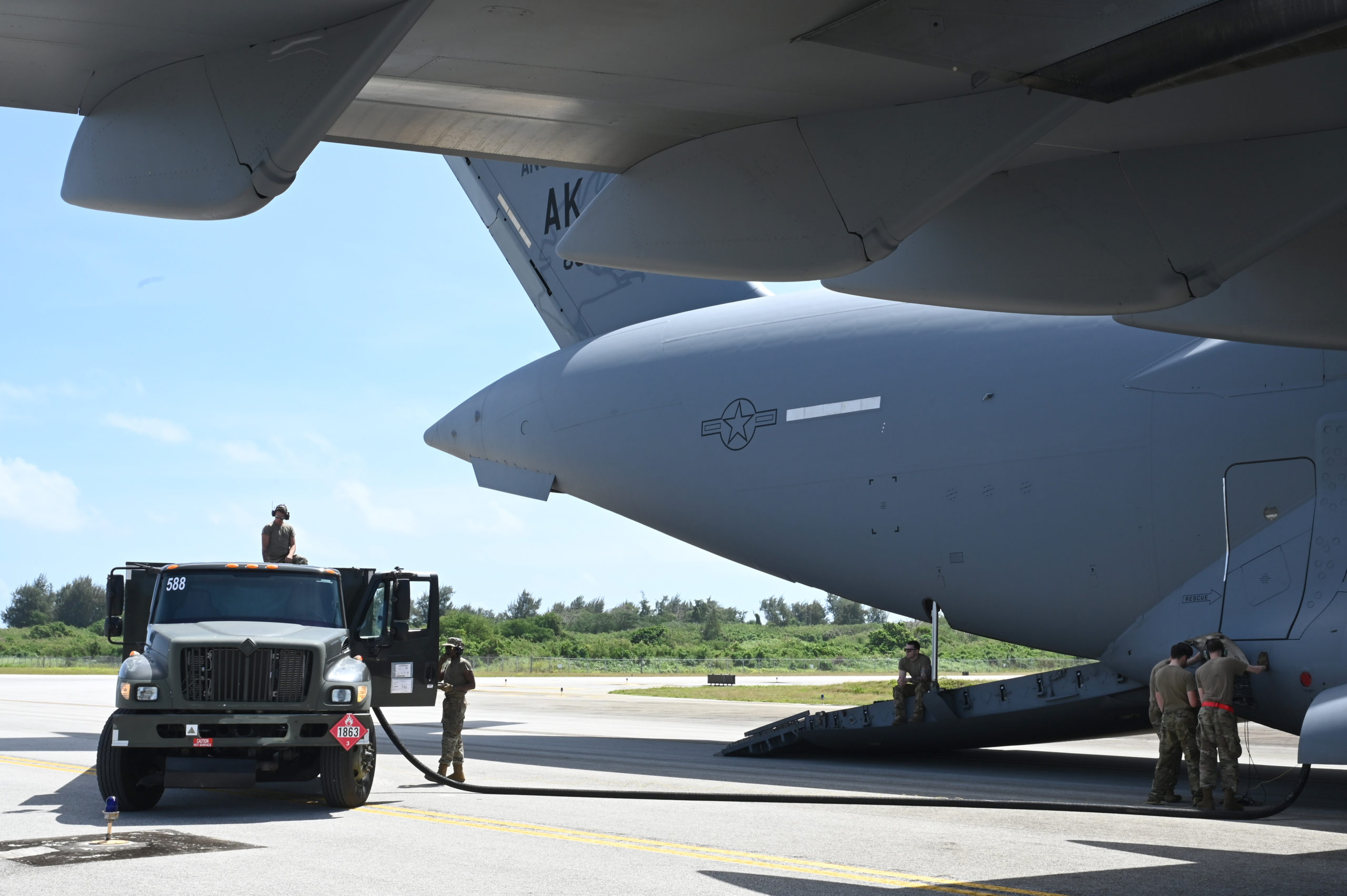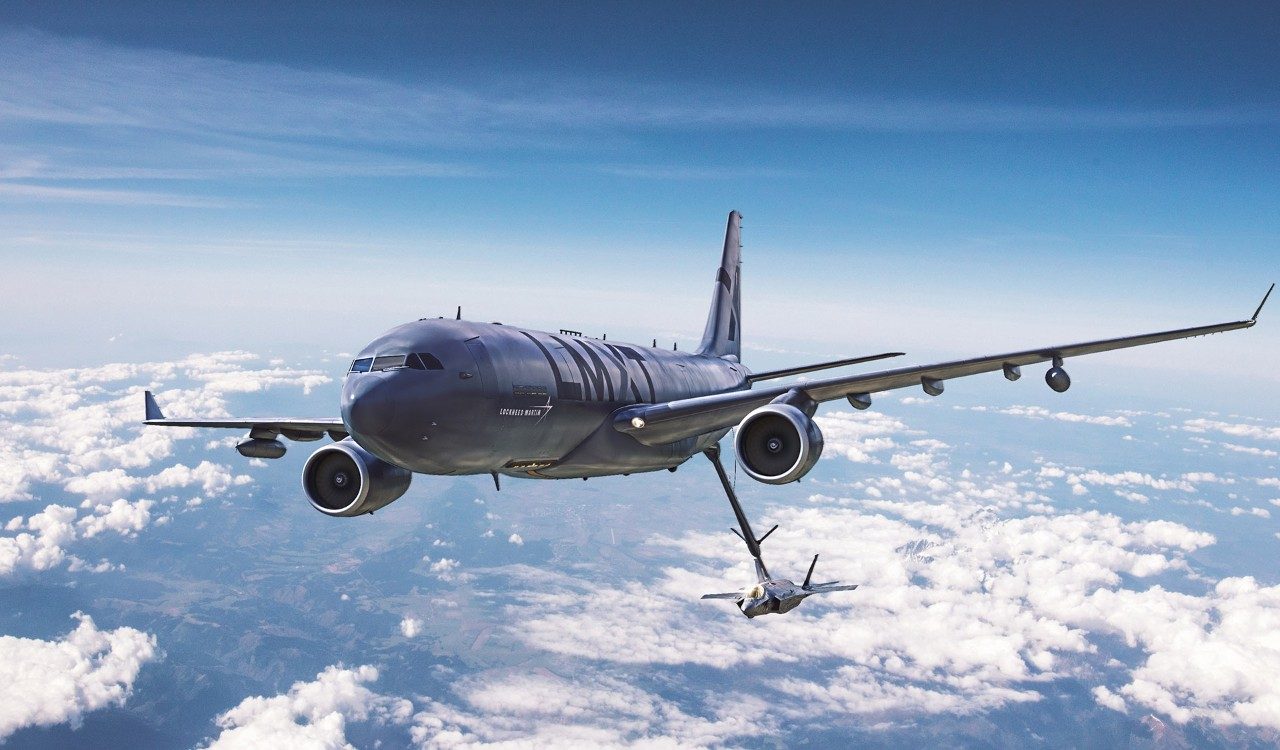For military planners, a change in the weather can impact a host of factors and decisions.
For instance, rising air temperature on Guam, a central hub of military operations in the Pacific, impacts the density of the air, which affects how much runway length a military aircraft needs to take off and how much gas, weapons, and cargo it might be able to carry.
“All of those calculations tie into larger strategies of how long our runways need to be, how many cargo aircraft we need, how much armament can fit on our planes, how powerful our helicopters need to be,” Lt. Col. Bill Danyluk, commander of the 14th Weather Squadron, told Air & Space Forces Magazine.
There are several weather squadrons in the Air Force, many of which provide forecasts so that units can safely operate. Danyluk’s squadron, however, has a mission performed by no other unit in the military: predicting what the climate might be like more than 10 years from now, with calculations that include the effect of human emissions, rather than simply relying on historical climate data.
“The average environment is going to change, and we need to start thinking about that now so we can adapt to those changes without losing combat power,” said Danyluk.
The goal is for the 14th Weather Squadron to be able to answer nuts-and-bolts questions that military planners have about how climate change will impact operations.
“What we’ve seen over the last couple of years is a significant increase in specific questions about climate change,” Danyluk said.
For example, if unit commanders want to plan for operations in northern Alaska in 2035, they would need to start planning years in advance to know what equipment and training regimens to develop so that troops are prepared for that environment. Part of the planning process involves knowing projected temperatures, snowfall amounts, wind, and other data that no current tools in the U.S. military can provide.
“It takes a long time to develop and field equipment to work in that new environment,” Danyluk said. “That’s why they need to ask for it now and understand how the future climate might be different from what it is today.”
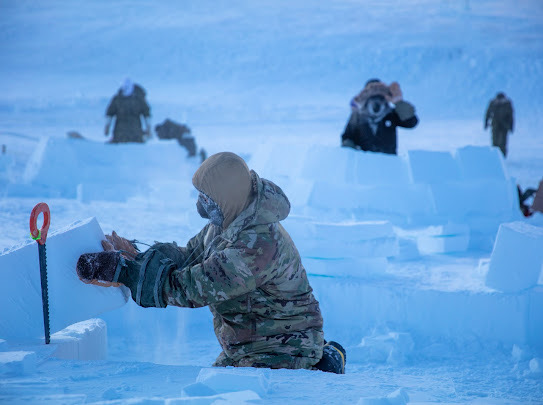
The 14th Weather Squadron’s new mission is one of several efforts the Department of Defense and the Air Force is pursuing to be ready for a changing climate. In October, the Air Force released its Climate Action Plan, where it established goals such as cutting emissions, pursuing alternative energy sources, and tying the “security implications of climate change” into its planning, training, operations, acquisition, logistics, and other areas of decision-making.
Though climate projection is a new mission for the 14th, the squadron has experience studying climatology. In fact, Danyluk said the name “Weather Squadron” is a bit misleading because the unit works on climatology, which involves longer-term analysis than weather studies.
“Weather is generally up to 10 days in the future, and then beyond that you are using some form of climatology,” he explained.
Climatologists often use historical data to predict what might happen in the future, but climate change throws a wrench in the works, potentially making those assessments less reliable. Instead, a new field called climate projection has emerged where climatologists use data such as future emissions concentrations, together with climate models, to project the future state of the climate.
The military has two preexisting methods for making climate assessments—the DOD Climate Assessment Tool (DCAT) is used to assess climate risk specifically for military installations and infrastructure, and the Department of Defense Regional Sea Level (DRSL) database projects sea levels. The 14th Weather Squadron will aim to answer climate questions beyond the scope of those tools.
The squadron, which falls under the 557th Weather Wing based in Offutt Air Force Base, Neb., is located in Asheville, N.C., amid some of America’s leading institutions for climate study. There is the National Oceanic and Atmospheric Administration’s National Climatic Data Center and the North Carolina Institute for Climate Studies, which helps the squadron stay abreast of the latest tools and techniques of the trade.
About half of the squadron’s 64 members are civilians. On the military side, Airmen who join the squadron have typically served at least one operational assignment providing weather expertise for an operational unit commander. That experience shows weather Airmen how operational commanders use climate data.
“The installation commander says ‘I want to know what the normal snowfall amount is here at my base in Utah so I can plan to buy enough salt and enough snowplows,’” Danyluk said. “He’ll ask his weather flight, who will then send the [request for information] over to the 14th Weather Squadron. It is really helpful to have that perspective from the field on how decision makers actually use the data.”
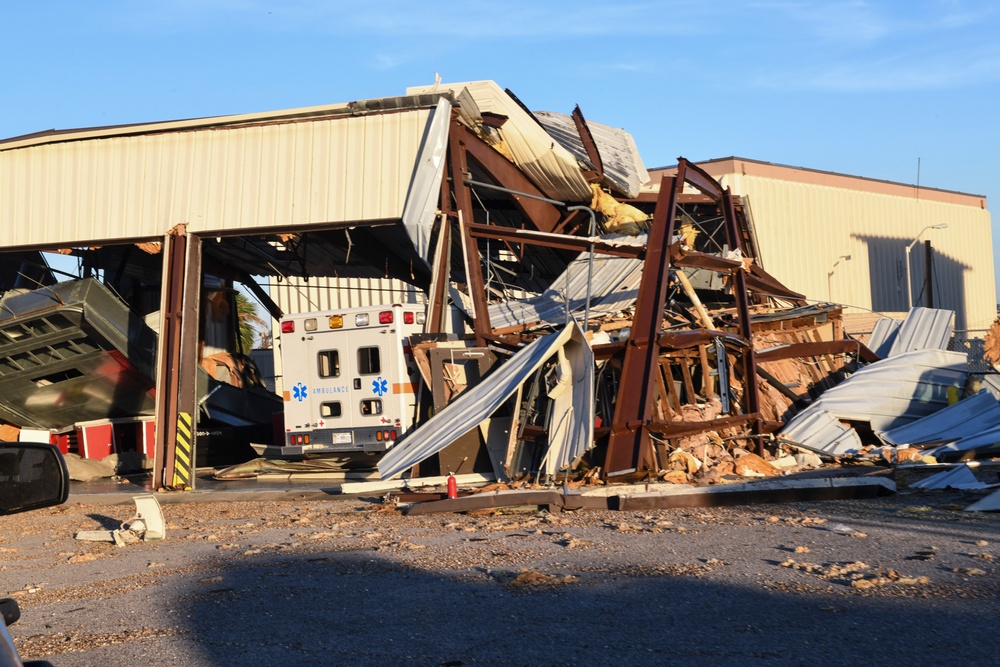
The squadron provides data to all the services, the intelligence community, and NATO, Danyluk said. Several of the squadron’s civilian members are experts with over a decade of work in climatology. But climate projection requires a new skill set—and involves some uncertainty.
“When you look 10 to 30 years into the future, there is some variability in the projections, because those projections are based on future emissions concentrations,” Danyluk said. “Those come from humans, so it depends on what humans do, and that cannot always be easily projected.”
The 14th will need new resources to take on its new mission. While the unit has an initial “pathfinder” capability to pursue its new climate projection mission, the Air Force is still working out how many and what kinds of new tools or staff the 14th will need to pursue it at a larger scale, Danyluk said.
“The timelines for how soon we can be fully capable depend on when we get the resources, and it also depends on what is defined as fully capable,” he said.
In the meantime, Airmen are improvising—as they so often do.
“We have tech sergeants and Airmen who are actually writing and manipulating computer code to extract data from our database and provide answers to questions that essentially have never been asked before,” Danyluk said. “As those new questions come in, they have to figure out how to answer them on a regular basis. It is pretty impressive what the individual Airmen are doing.”
Though planners can use the analysis provided by the 14th Weather Squadron to make decisions, Danyluk emphasized that it’s not the squadron’s job to make recommendations. Weather or climate Airmen provide data and analysis, but it is up to the policy-maker to decide how to act on that analysis.
“It’s an exciting time for the 14th and the whole military, because it is providing a new capability,” he said. “The end goal is to make better decisions, make better use of taxpayer money and, at the end of the day, to maintain the core mission of the Department of Defense.”

